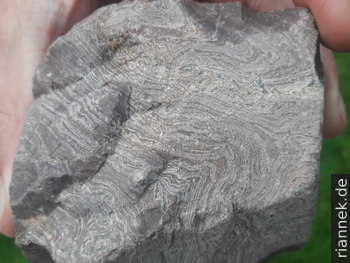At first glance, Glen Coe does not look like a volcano. The classic U-shaped valley was clearly formed by a large glacier in colder times. Smaller, also U-shaped side valleys branch off on the south side and subdivide the mountain range into individual rugged peaks, the “Three Sisters”. One of them, the hanging valley called “Hidden Valley”, is the destination of our hike. The landscape is downright alpine, with Glen Coe considered one of the most beautiful valleys in Scotland. Because of a 17th century massacre of a clan by the British, it is also still an important reference point for Scottish nationalism.
But geological history was also written here (see also my book The Formation of Mountains). It is, in fact, an ancient “supervolcano” where glaciers have exposed sections through the interior of a large caldera. And it was here, in the early 20th century, that Sir Edward Bailey first discovered how a caldera is formed, thanks to these easily accessible profiles. A caldera is a large “crater” formed by the collapse of the “roof” of a large magma chamber during a particularly large eruption. Beautiful recent examples include the Tengger Caldera on Java, Laguna Quilotoa in Ecuador, Santorini in Greece, Ngorongoro in Tanzania or Crater Lake in Oregon (USA). We can imagine this cauldron at Glen Coe about 400 million years ago in the sky above the mountains, so to speak, with a diameter of 8 km. However, the deeper part of these collapse structures is always filled in with volcanic rocks during the eruptions. At Glen Coe a section of about 1200 m in thickness is exposed (andesites and rhyolites); surrounded by older metamorphic rocks. Eruptions at these volcanoes are mostly along fissures, often concentric ring faults or associated with larger linear faults. The deposits rain down from ash clouds (tuff) or are deposited by pyroclastic flows (various tuffs and ignimbrites). A fascinating flow structure (bands, striations, folds) can be seen in some ignimbrites from Glen Coe.

Lava flows are atypical of caldera volcanoes, but they can be promoted in smaller eruptions during the long quiescent periods between major eruptions. In deeper parts, magma can also intrude between older units as horizontal sills (esp. the andesites in the lower part of Glen Coe), which are difficult to distinguish from lava flows. Almost all around, the volcanic rocks of the Glen Coe caldera are surrounded by a ring of granite that intruded along the ring fault.
Incidentally, Ben Nevis is also a (similarly old) caldera, although an even deeper level is exposed there: Namely, the contact between magma chamber and its “roof”.
Bailey imagined the formation of the Glen Coe caldera like a piston, according to which the “roof” of the magma chamber sank evenly and symmetrically into the interior along an ring fault during the eruption, the magma rose along the fault (and formed the granite). It is now clear that the geometry at Glen Coe is not quite so simple. The actual ring fault probably formed at a late stage (and the granite even later), whereas in earlier eruptions individual blocks subsided to different degrees and also tilted in the process (Moore and Kokelaar 1997). The faults of a rift system (presumably at a transform fault) probably played an important role in the ascent of the magmas.
Literature
Moore und Kokelaar (1997), Tectonic influences in piecemeal caldera collapse at Glencoe Volcano, Scotland. Journal of the Geological Society, London, Vol. 154, S. 765–768.
Fraser et al. (2004) Age of the Ballachulish and Glencoe Igneous Complexes (Scottish Highlands), and paragenesis of zircon, monazite and baddeleyite in the Ballachulish Aureole. Journal of the Geological Society, London, Vol. 161. S. 447–462.
Brochure “Glen Coe – Gleann Comhann” by Lochaber Geotrails.
Read on
Isle of Skye
Eilean Donan Castle
Ben Nevis and neighbouring Munros
Hike in the Cairngorms
Unconformity at Siccar Point
Orkney Islands
At Fingal’s Cave on Staffa
